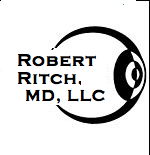How is an eye examination given to an infant or young child?
A: If glaucoma is suspected in a child under the age of four, it is often necessary to perform an examination with the child under anesthesia. Under anesthesia, the doctor is best able to test the child's intraocular pressure (tonometry) and evaluate the angles or dimensions of the eye (gonioscopy). Gonioscopy assists the doctor in determining whether the eye is functioning properly: producing, circulating, and draining the fluid or aqueous humor within the eye.
Should I allow my twelve year old participate in regular activities and sports, despite his glaucoma?
A: Your child's participation level depends on his level of vision and the condition of his eyes. You should speak with your child's ophthalmologist to determine what level of activity would be acceptable and what could be damaging. It is possible for a child to have a normal and active life if the glaucoma is under control and sight is good. If a child has had a corneal transplant, more caution is warranted and the child's physical activity should not be strenuous or fast-paced.
Is there a surgery that can cure childhood glaucoma?
A: Congenital, or infantile, glaucoma can often be "cured" through a goniotomy or trabeculotomy surgical procedure, although it may be necessary to have more than one operation. These procedures are invasive and intended to cut the trabecular meshwork (eye's drain) in order to improve its drainage function. If these procedures are unsuccessful, it will become necessary to perform a trabeculectomy, a filtering surgery traditionally given to adults. If surgery is successful, it is sometimes considered a "cure" because the glaucoma may never become problematic or vision threatening, but it never really goes away. There is still a chance that conditions will surface years later, and that further treatment with medication and/or surgery will be required.
Are younger patients on glaucoma medications at a higher risk for detached retina?
Q: I have read that younger patients on glaucoma medications, such as miotic drops, are at a higher risk for detached retina. If this is so, what can be done to prevent the detached retina?
A: Age is not a factor in retinal detachment from using miotic drops. The predisposing condition is myopia. Patients with myopia are more likely to have peripheral retinal problems which can lead to retinal detachment, the most important of these is lattice degeneration, which is more common the greater the myopia. Person with pigment dispersion syndrome and pigmentary glaucoma are more likely to have lattice degeneration. The reason for this remains unknown, but they're maybe a genetic factor. Younger persons with glaucoma are much more likely (as high as 80%)to be myopes than are older persons, in whom aging appears to contribute to the development of glaucoma. This is probably the reason for the mistaken impression that younger persons are at higher risk for detached retina. All persons beginning miotic therapy, and especially those with pigmentary glaucoma, should have a peripheral retinal examination or retinal tears before stating the drops.
Examinations
Other Ophthalmic Conditions
Glaucoma and Children
Diet, Exercise and Nutrition
Glaucoma Medication
Surgery
Other Medication
General
Clinical Trials
Have a question for the doctor? Ask using the Online Question Form.
Require a visit to the doctor? Click Here.







